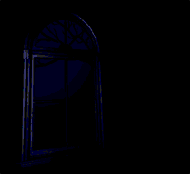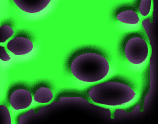|

1. What is the difference between a ghost and a spirit?
A
"ghost" is defined as a soul which has left the body, but has not gone on through the Light and into the Afterlife. For some
reason, it has chosen to stay behind. A haunting by a ghost isn't necessarily always a friendly one.
A "spirit" is
defined as a soul that went through the Light and on into the Afterlife. These souls get 'processed', and are eventually allowed
to return to the physical world to comfort or help loved ones who still live. They are not trapped like ghosts are, but have
the freedom to come and go between the physical world and the Afterlife. They will appear only rarely in our lives, when we
usually need assistance or great comfort.
Family spirits don't show up very often in our lives because apparently, time
is different for them. What can be a lifetime to us is only a few moments to them. People who have experienced extreme NDE's
have reported meeting family members before they are returned to the physical world. They have stated that deceased family
members will say things like, "I just got here, and now here you are" when the fact is that the deceased member passed on
30 years prior to the person experiencing the NDE.
2. Types of ghosts:
Various types of ghosts have been documented
throughout history. Apparitions, shadows, mists, orbs, and poltergeists are all different types of ghosts. The following list
is a definition of each of these types.
a: Apparitions: These are human-shaped and either appear as a full or partial
in form. They are usually white, grey or black in color. "True" Apparitions are always either grey or white. Shadow Ghosts
are black. Most apparition sightings are usually non-interactive, but many have been interactive in both positive and negative
ways.
b: Shadows: These dark apparitions have been described in many ways. They range from small, darting, "rat-sized,
cat-sized or small-dog-sized" shadows that are seen out of the corners of our eyes, to large human-shaped shadows. Shadow
ghosts have also been described as misty and shapeless. Human-shaped shadows also show variety, and have been described as
"human-shaped", "robed", or as "wearing hats".
c: Mists: These are misty forms that can be very transparent, or very
thick and dark. When thicker, it's also referred to as "ectoplasm", and can become thick enough to form physical substance.
Mists are usually white, grey or black in color. Black mists are often associated with feelings of dread or fear, and are
considered a type of Shadow Ghost.
d: Orbs: Orbs manifest as colored or white globes, streaks or glitter. They are
the simplest form that a ghost or spirit can take, as making an orb uses very little energy compared to making an apparition.
Orbs are usually described as round or elongated, and most times are either transparent or bright white. However, orbs of
other colors have been captured on camera and seen with the naked eye. Can these colors signify any kind of connection to
that particular spirits or ghost's aura? Or do colors simply represent the mood or spiritual level of that particular orb?
Glitter may be another ghostly form altogether that isn't related to orbs, but until we know more about it, we'll categorize
it with orbs. Orbs are usually harmless, but this doesn't mean that the ghost creating it isn't. It just means that there
haven't been any orb attacks reported, so it could be that this form has no real power to expend other than to travel from
one place to another.
e: Poltergeists: Meaning "noisy ghost", poltergeist activity is usually associated with some
common denominators. In most cases, there is usually a girl (sometimes a boy) involved who is at the age of puberty. Whether
the child is manifesting the poltergeist activity because of changes to their body and the energy created, or whether the
poltergeist is attracted to their intensified energy at the time of puberty is debatable. Poltergeist activity can become
very bothersome, with rappings and occasional thumps evolving into constant banging and furniture being moved. Poltergeists
are known to stack items, move objects, make a variety of noises and are apparently not shy about letting you know when they're
around. Poltergeist activity can become very scary and dangerous, as there have been cases of contact such as pushing, scratching
and other attacks.
f: Residual Haunting: A residual haunting is a playback of a past event. The apparitions involved
are not spirits, they are "recordings" of the event. I believe that this will be the first type of haunting that main stream
researchers will recognize and study. There are numerous theories on how these residual hauntings come to be. Video and audio
tapes capture sounds and images on a film of special material that has been oxidized or rusted. Certain building materials,
such as slate used in older castles and stone structures and iron nails used in many older buildings, have properties similar
to that of the tapes. When a traumatic event occurs or a time of heightened emotions, these materials record the event for
future playback. Everything is made up of energy and energy cannot be destroyed. The materials store the energy created by
these traumatic events and plays them back at a later time. The Tower of London's ghost of Anne Boleyn and the Brown Lady
of Raynham Hall are two famous examples of residual hauntings. We are not sure what causes the playback of the events, that
still remains a mystery. Is it the right weather conditions, the witnesses energy or sensitivity or some type of energy release?
That is the question that we as researchers are trying to answer. As I said, in a residual haunting, there is no spirit involved.
This type of event is not dangerous at all so if you ever have the chance to witness one, do so without fear and enjoy it.
3. Why ghosts appear:
Ghosts can haunt because of the following reasons: Fear, unfinished business, unwillingness
to let go of what has always been familiar, staying to comfort loved ones, or an unexpected sudden traumatic death where they
were "not prepared" or felt "too young to die", or even addictions.
4. Why spirits appear:
To let us know
that they're all right on the Other Side, and/or to comfort us.
5. Signs of a haunting:
The signs of a haunting
can include objects disappearing and reappearing; noises; odors; items being moved; radios, TVs and other electrical appliances
turning on and off; water being turned on and off; toilets flushing when no one is in the bathroom; mysterious writing or
images; the sensation of "not being alone" or of "being watched"; voices or footsteps when no one is present; sightings of
apparitions, shadows, mists, or orbs; objects being thrown; cold spots; or being touched. Pets may act strange, from staring
at or chasing things that aren't there, to growling, hissing or barking at "nothing". In severe hauntings, one may experience
being scratched, grabbed or shoved, but this isn't very common. Even more rare are sexual experiences, but they have been
reported.
6. Communicating with a ghost:
You can speak to a ghost just as you would another human being. When
we cross over, we take our feelings with us, and so you should treat contacting a benign ghost with the same respect that
you would show to another human being.
7. Protecting yourself and your home:
It is possible to protect yourself
and your home through prayer or other means.
8. Getting rid of a ghost:
There are various ways to be rid of
a ghost in your home. They range from simply asking it to leave, to performing exorcisms. For more, follow this link and scroll
down the page for instructions on "cleansing" your home.
|

